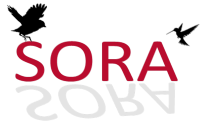Notes from Marin and San Benito Counties, California
Notes from Marin and San Benito Counties, Cal.
In BULLETIN No. 2 are some interesting notes from different sections of the state concerning the appearance of birds unusual in the localities mentioned. It strikes me that it would be beneficial to the students of ornithology if such notes were supplemented by additional ones from persons who have been in position to make observations upon the species mentioned in different localities at corresponding dates, as this would assist very materially in studying distribution and habits. Accordingly I will endeavor to make a start in this tine by adding my notes to those of the last issue.
RED-BREASTED NUTHATCH (Sitta canadensis). Mr. Otto Emerson speaks of these birds having appeared in Alameda Co. in September 1898 and mentions their occurrence in Marin County. At that time they were very abundant here, the first having been observed on Aug. 29 when two or three were seen. A few days later they were very numerous, frequenting almost altogether at this time the fir and cypress trees on the ranges. In October they became less abundant and toward the middle of the month were found feeding among the live oak trees, even in the valley near the house. By Nov. 1 they had all disappeared. This bird has never to my knowledge, been recorded in Marin Co. before. I saw a few in San Mateo on Nov. 6.
LEWIS' WOODPECKER. (Melanerpes torquatus). These birds breed to a greater or less extent, seemingly depending upon the season, at Paicines, San Benito Co., Cal., where we have taken several sets. On the first of last October a large number of immigrants must have come in as they were far more numerous than those breeding there would account for by natural increase. My brother and I collected a beautiful series at this time of birds of the year in different plumages, some of which were exceedingly interesting.
AMERICAN CROSSBILL (Loxia curvirostra minor). At times these birds pass through Marin Co. in numbers, stopping for a short while to feed, often on the Tojon berries. As they are very shy and generally frequent the tops of the tall Douglas firs on the higher ranges they are difficult to obtain, but specimens have been taken on two occasions by C. A. Allen. Some years elapse without any being observed, but this does not prove that they have not been here, as their usual feeding grounds are seldom visited by any observer.
WESTERN EVENING GROSBEAK (Coccothraustes v. montanus). On October 14, 1898 a ♂ of this species was shot near Point Reyes Station, Marin Co., and sent to me. Their occurrence in this county has been reported to me before but as no specimens had been taken the reports were not verified.
MYRTLE WARBLER (Dendroica coronata). This bird is much more common in California than most people have been led to suppose. There are a number in our collection from Marin and San Benito counties, though we have only collected them casually. I have seen a good many that have not been taken and find that at close range they can be sufficiently recognized by the superloral and postocular streaks to enable one to be moderately accurate in identification. That is to say, if a person were to shoot all that he saw with this characteristic he would find the majority of his birds to be coronata.
SEX OF WINTER RESIDENTS. It would be interesting to hear from different localities in regard to which sex predominates in some of the winter residents. For instance, here at San Geronimo, nearly every Red-breasted Sapsucker (Spirapicus ruber) taken is a ♀, especially so in midwinter. All of the Ruby-crowned Kinglets (Regulus calendula) taken here have been males. Almost all of the Dwarf Hermit Thrushes (Hylocichla aonalaschkae) also have been males, only three that I know of having proved to be females, one of these being a partial albino. We have several Thick-billed Sparrows taken here at different times and all ♀. These last are present some winters, but not all. How are the birds above mentioned in other localities?
JOSEPH MAILLIARD
San Geronimo, Cal.

